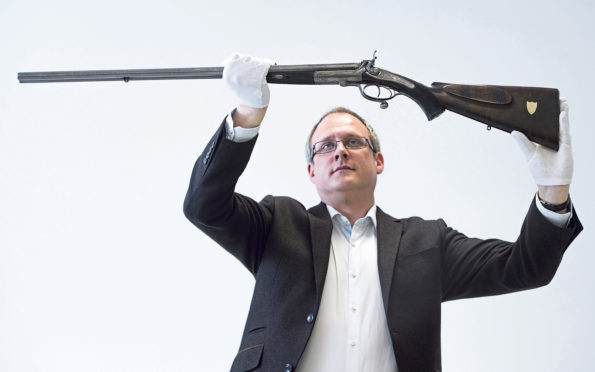
It has been a tourist magnet for centuries, an irresistible draw for millions.
An exhibition at the National Museum of Scotland will explore the romantic fascination with the Scottish Highlands.
Curator Dr Patrick Watt told Bill Gibb The Honest Truth about the myth and reality.
What’s the exhibition about?
In the aftermath of the final defeat of the Jacobites at Culloden, Highland culture was in crisis, tainted by rebellion.
The tartan, bagpipes and weaponry of traditional clan society were symbolic for many of a barbaric, dangerous part of the country.
From the outside, even the mountainous landscape was viewed by many as hostile and remote. Yet little more than a century later, Queen Victoria had created her “dear paradise” at Balmoral, and those same elements – tartan, bagpipes, wild landscapes – became established as enduring international symbols.
The exhibition asks how this came about, exploring the real roots behind these Romantic visions of Scotland and how Scotland’s relationship with Romanticism had a lasting impact on how we see ourselves and how others see us.
What’s in the exhibition?
There are more than 300 objects. They range from Scotland’s oldest surviving pipe chanter to the handsome sporting rifle that Queen Victoria gave her faithful servant John Brown as a Christmas gift in 1873.
What are some of the other highlights?
Well, there’s also Felix Mendelssohn’s score for the Hebridean Overture, a silver urn on loan from Abbotsford, given by Lord Byron as a gift to his friend and fellow literary superstar Sir Walter Scott, and a fantastic range of costume and clothing.
We’re also working with Sabhal Mòr Ostaig, the Gaelic college on Skye, and we’ll be strongly representing both the Gaelic language and culture.
Tell us more about Scott.
His romantic poetry and historical fiction further popularised a vision of Scotland that had been taking hold throughout Europe since the publication of the Ossian poems in 1760.
People wanted to visit the places described in the poems for themselves, which led to the birth of the Scottish tourist industry. Artists, writers and composers were inspired to visit, many of whom called in to visit Scott at Abbotsford on their way up the road, including Mendelssohn, Wordsworth, Turner and many others.
So, he was hugely influential?
Yes, and he played a central role in one of the pivotal developments we cover in the exhibition, which is King George IV’s visit to Edinburgh in 1822.
This was the first time a reigning monarch had come to Scotland since Charles II in 1651.
The King wore tartan and, at Scott’s behest, so too did the majority of those who turned out to greet him. For many lowlanders, this would have been a first.
Was tartan really banned?
Most people have an idea that tartan was banned after the Jacobite risings. That’s not entirely true – The Act of Proscription specifically forbade the wearing of Highland dress by men. The incorporation of Highland Regiments would in time establish a distinctive Scottish identity within the British armed forces, with a growing reputation for heroism as their contributions were celebrated, particularly in victories against the forces of Napoleon.
These triumphs were particularly celebrated by bodies like the Highland Society of London and we’ll show some of the trophies and medals they commissioned.
So, when we look at these things today, are we looking at real tradition or a romantic fiction?
That’s really what the exhibition is all about.
As we will show, these elements of Scottish identity have a long history.
However, it’s true to say that this was the period in which certain aspects took on the particular forms that we still recognise today.
Wild and Majestic: Romantic Visions of Scotland is at the National Museum of Scotland from June 26 to November 10

Enjoy the convenience of having The Sunday Post delivered as a digital ePaper straight to your smartphone, tablet or computer.
Subscribe for only £5.49 a month and enjoy all the benefits of the printed paper as a digital replica.
Subscribe